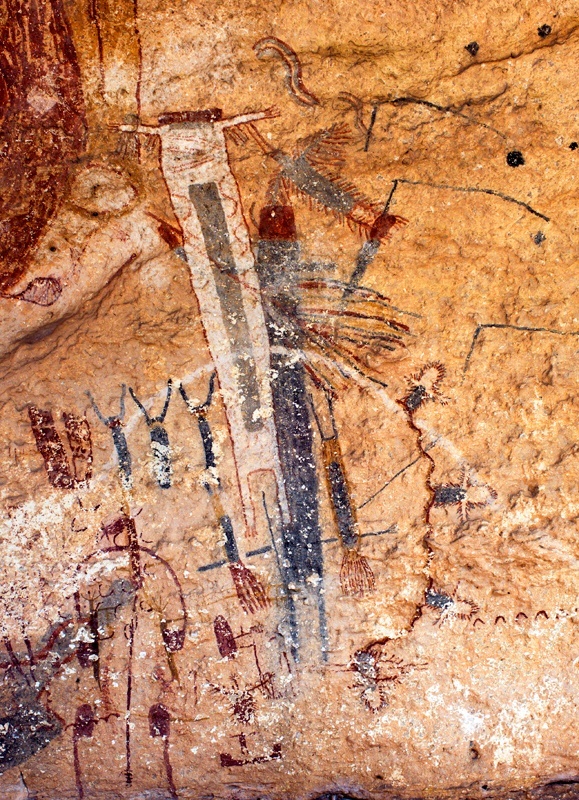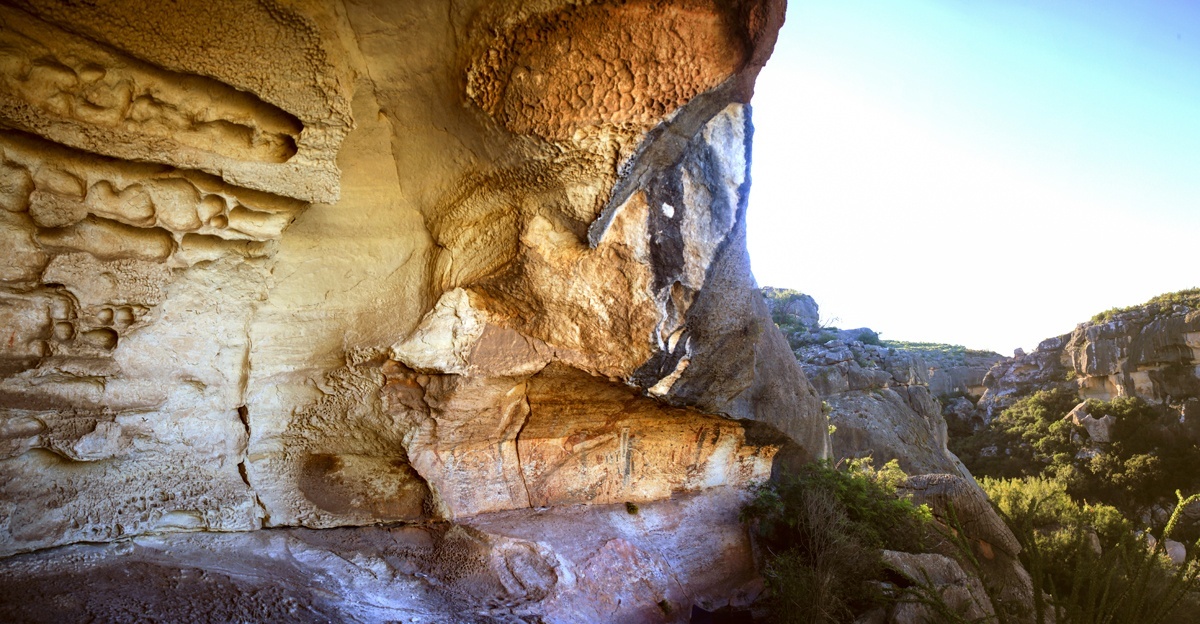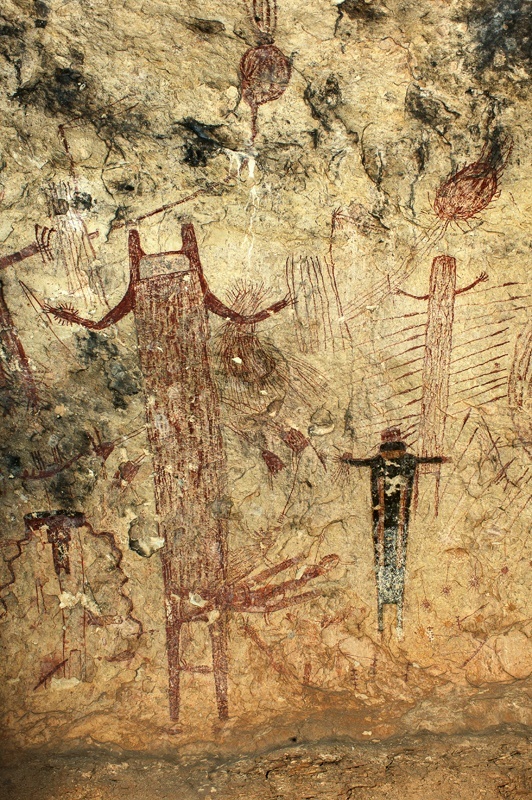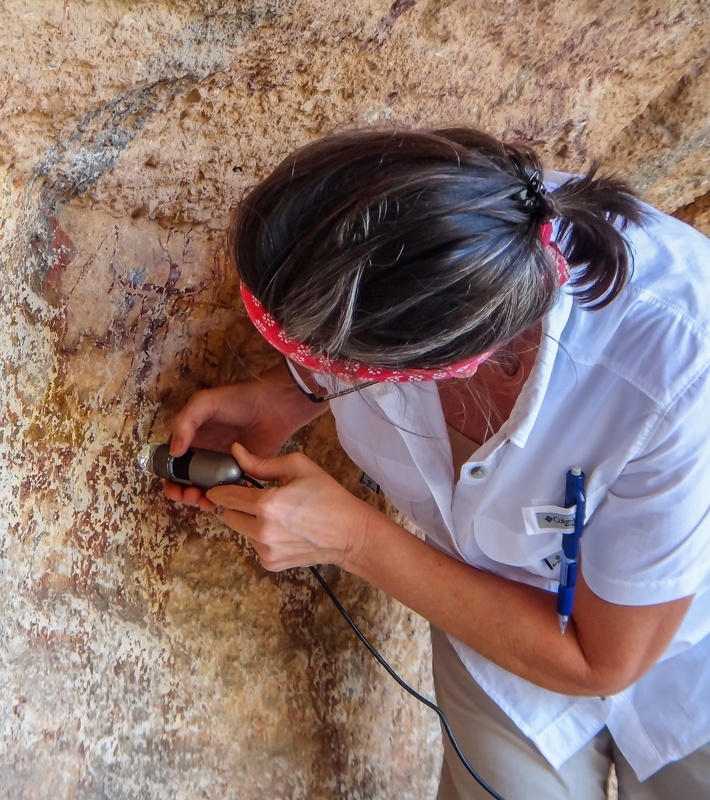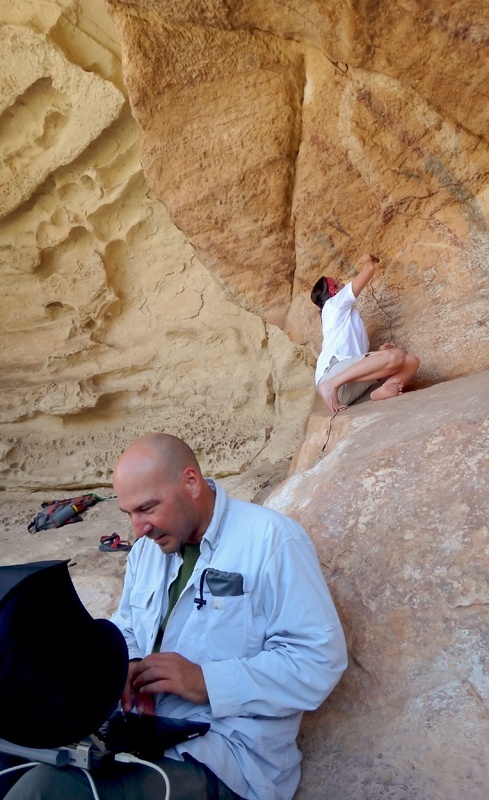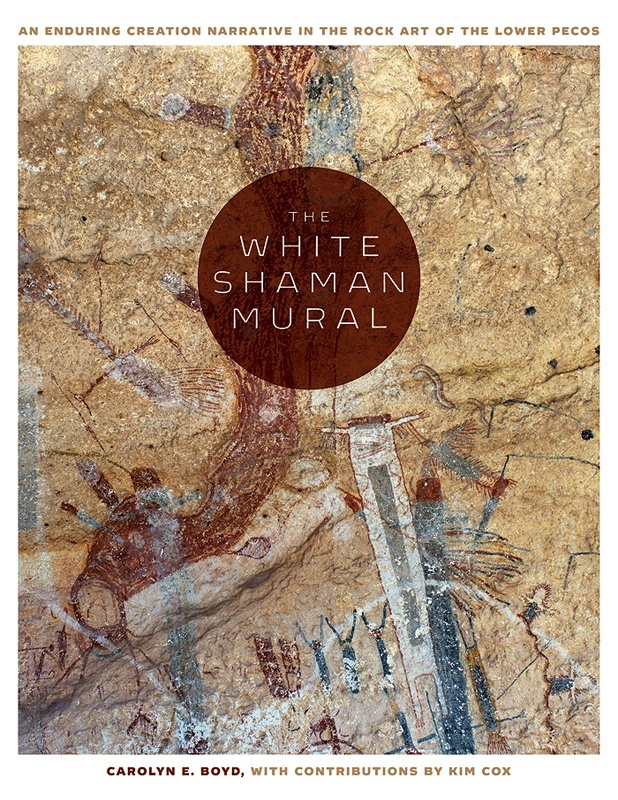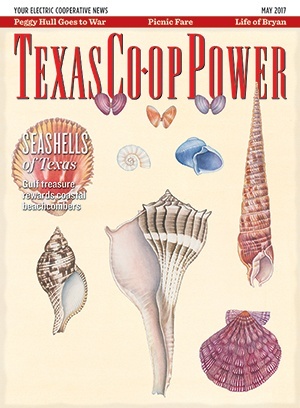White Shaman Shelter is located at the heart of the Lower Pecos Canyonlands. Due to a unique combination of ecological and geological factors, rockshelters here contain some of the best-preserved and longest records of Native American lifeways—from 11,000 years ago to European contact. As a result, the Lower Pecos Canyonlands is considered one of the most significant archaeological regions in the world. Although its boundaries are ill-defined, the visual and material culture characterizing the region and its prehistoric inhabitants extends approximately 70 miles north and 90 miles south of the United States–Mexico border, from near the hamlet of Sheffield, Texas, to the Arroyo de la Babia in Coahuila, Mexico. East and west the region stretches approximately 80 miles between the tiny communities of Carta Valley and Dryden, Texas. At the region’s center, the Pecos River converges with the Rio Grande. White Shaman Shelter is located here in a small tributary canyon of the Pecos River.
The pictographs of White Shaman Shelter are classified as Pecos River style. This is the most complex and compositionally intricate of the regional rock art styles. An array of earth colors were used to create murals that are extraordinary in the level of skill required to produce them, as well as sheer size and complexity. Some of the panels are massive, measuring over 100 feet long and 30 feet high; others are small, tucked away in secluded alcoves high above the canyon floor.
More than 200 rockshelters north of the Rio Grande contain Pecos River style imagery. South of the border, in Coahuila, Mexico, at least thirty-five Pecos River style sites have been identified. Solveig Turpin who recently published a book on Coahuila rock art, maintains that “there are surely scores more in the secluded canyons and caves in the sierras north of Arroyo de la Babia.”
Pictographic elements in Pecos River style murals on both sides of the border include anthropomorphs, zoomorphs, a wide range of geometric imagery, and enigmatic figures that are not identifiable as human or animal. Anthropomorphs are the most frequently depicted element. Although these figures share many characteristics—such as elongated, rectangular bodies with disproportionally short arms and legs—among them there is incredible diversity. They typically average in size between 3 and 7 feet; however, some are monumental, towering more than 20 feet high, while others are pocket-sized, standing only 3 inches tall.
These fascinating figures often are elaborately executed in red, yellow, black, and white, but at other times plainly painted in only one color. Not only is there variability in the form and color of these figures, but also in the accoutrements and paraphernalia associated with them. Headdresses of varying types, clusters of feathers at the waist, and wrist or elbow tassels often adorn these humanlike figures. Generally the artists portrayed anthropomorphs wielding paraphernalia such as atlatls and darts in their right hand. In the left hand they frequently hold staffs, feathered darts, and rabbit sticks. But sometimes none of these items are present, or they are associated with the opposite hand.
Animals are also portrayed in the paintings and, as do anthropomorphs, exhibit significant diversity. Deer and felines are the most visually prominent. Deer are typically painted red, but also can be yellow, black, white, or a combination of colors. Some are portrayed with antlers, tails, hooves, and dew claws, but others with only antlers or hooves. Most of the time, but not always, they are impaled with a dart. Felines tend to be painted larger than life. A few are massive, measuring over 8 feet from the tip of the tail to the tip of the nose. Although most frequently painted red, they are also portrayed in yellow, black, and white, or a combination thereof. Birds are small, easily overlooked, and often painted in more than one color. Some imagery resembles insects, such as caterpillars, dragonflies, and moths or butterflies. Sinuous, snakelike figures are also portrayed. Some appear to be spewing venom, and others are incredibly long, spanning up to 20 feet and bedecked with dots and horns.
For decades conventional wisdom held that these murals represented numerous painting episodes executed by different artists over hundreds or even thousands of years. We now know that most are not a random collection of images painted over the course of time but, rather, compositionally intricate, highly patterned, and rule-governed visual texts. The Lower Pecos artists used pieces of ochre or charcoal to sketch out and organize the elements of their compositions. Vestiges of these preliminary sketches still can be seen today. At Cedar Springs, red paint was sprayed around a stencil to produce a finely executed negative image of a tall anthropomorph. And at numerous sites, long, crisp lines with slightly raised paint along the outer perimeter suggest the use of a straightedge. Production of these panels was no small undertaking. Significant time and effort went into planning the composition, obtaining resources to make paint, creating the artist’s tools, and constructing scaffolds or ladders, not to mention the rituals that likely accompanied each step in the process. The rock art of the Lower Pecos Canyonlands was part of the living landscape that provided food, shelter, and a connection with the spirit world. The canvases provided by rockshelter walls, such as those at the White Shaman site, played a significant role in how these people depicted and recorded their knowledge, revealing a deep, complex cosmology that we are now beginning to understand.
——————–
Text excerpted from The White Shaman Mural (University of Texas Press, 2016).

